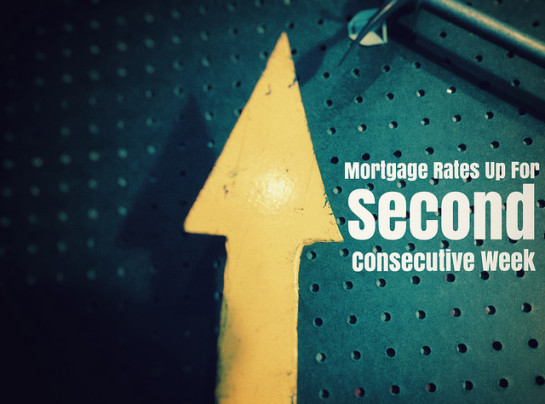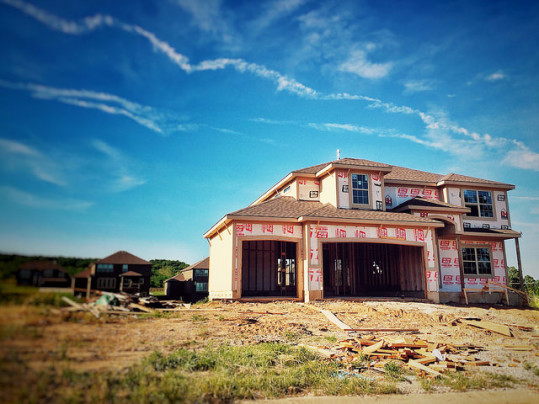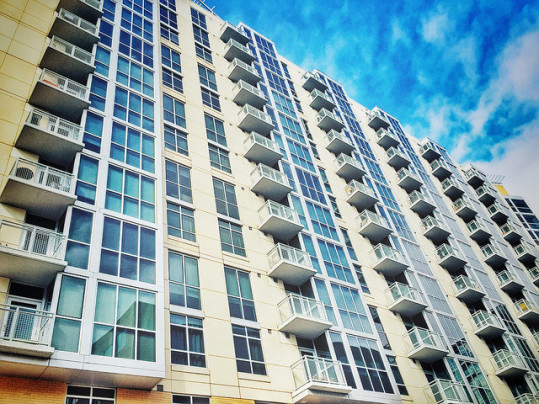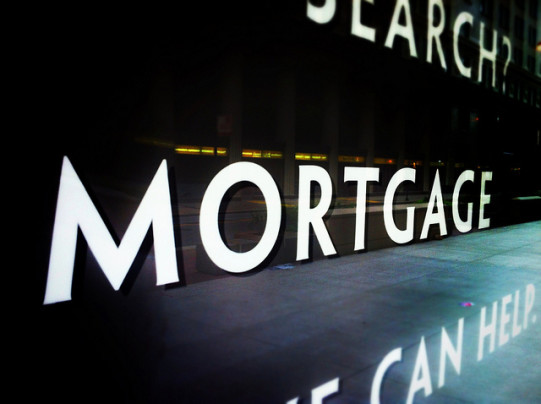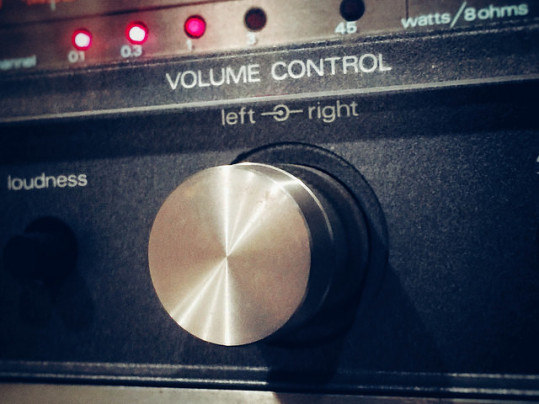According to the Mortgage Bankers Association’s Weekly Applications Survey, demand for loans to buy homes rose 3 percent last week despite a bump in mortgage rates. Average rates rose for 30-year fixed-rate loans with both conforming and jumbo balances, as well as 15-year fixed-rate loans. Rates for loans backed by the Federal Housing Administration were unchanged from one week earlier. Higher rates didn’t stop buyers, however. In fact, the MBA’s purchase index is now 13 percent above where it was last year at this time. That’s due, in part, to the fact that rates – though at their highest level since June – are still low by historical standards. Refinance activity, on the other hand, is more sensitive to rate increases and saw a 1 percent decrease last week. Michael Fratantoni, MBA’s chief economist, says average mortgage rates are as high now as they were the week of the Brexit vote in June. “Refinance applications dropped to the lowest level since the week of the Brexit vote, as mortgage rates reached their highest level since then,” Fratantoni said. The MBA’s weekly applications survey has been conducted since 1990 and covers 75 percent of all retail residential mortgage applications. More here.
Archive for October 2016
New Home Market Could Be Key For Buyers
If you want to know what’s happening with home prices, it’s really just a matter of supply and demand. When there are a lot of houses available for sale and not many buyers, prices fall. When there are a lot of buyers but not a lot of homes to buy, home prices rise. That’s been the case lately. The number of homes for sale has been low for a while now and, since buyer demand is high, prices and competition have been increasing steadily in a lot of markets. With fewer opportunities for buyers and prices rising, there’s been a lot of attention focused on builders. But why? Well it’s because, as builders build new homes and put them up for sale, home prices moderate and affordability conditions improve, helping to balance the market. So naturally, the hope is that new home construction picks up. One measure of how the new home market is doing is the National Association of Home Builders’ Housing Market Index. The index scores builders’ confidence in the new home market on a scale where any number above 50 indicates more builders view conditions as good than poor. In October, the index fell to 63, but remains at its second highest level this year. Ed Brady, NAHB’s chairman, says the results indicate new home construction should continue to make gains. “Even with this month’s drop, builder confidence stands at its second-highest level in 2016, a sign that the housing recovery continues to make solid progress,” Brady said. More here.
Making Sense Out Of Selling Your House
Selling anything requires a good first impression. And most impressions are made on a sensory level. A familiar scent or some soothing music can set a mood and alter perceptions. That’s why home sellers should pay extra attention to the details when trying to appeal to potential buyers. But what are some of the things homeowners can do to make their home stand out? Well, a recent survey conducted by Trulia asked real estate agents for some tips. The number one thing, according to nearly 75 percent of respondents, was cleanliness. A messy house makes it hard for buyers to see beyond the clutter and visualize living there. Keeping your home neat and tidy is a fairly obvious way to put your best foot forward, though. Some of the other, less evident, examples include using scents to make your house more inviting. The fresher smelling the better. Vanilla, for example, is a scent known to help lower stress and boost nostalgia. You might also pay attention to the color of your walls. Repainting is a pretty easy fix and buyers tend to have an easier time imagining their things in a space that seems clean and easily adaptable. For that reason, agents recommend repainting any bold color choices in an ivory or eggshell to help attract potential buyers. More here.
The White House Is No Ordinary Home
Along with the reins of power, the winner of this year’s presidential election gets the keys to a new house. The White House is among the world’s most recognizable addresses and boasts a long list of amenities. With a tennis and basketball court, putting green, bowling alley, movie theater, jogging track, 28 fireplaces, several gardens, and 55,000-square-feet of floor space, it’s no ordinary real-estate listing. But despite its history and prestige, its inhabitants are – like any homeowners – eager to renovate, update, and make it their own. A recent list on Realtor.com covered some of the most famous additions, including the single-lane bowling alley Richard Nixon installed and the second-floor balcony Harry Truman added, despite complaints from critics who said it would detract from the home’s Greek columns. Of course, the most famous White House renovation was undertaken by Jackie Kennedy, who brought in art and antiques, got the White House declared a museum, and added a private dining room and kitchen for the first family. Now, with the election just around the corner, we’ll soon know, not only who will reside in the historic home, but also what renovations they’ll oversee. More here.
Do Most Buyers Rent Before Buying A Home?
For a lot of people, renting an apartment or house before buying their first home serves as a type of practice run. In fact, before 2003, about 80 percent of first-time home buyers rented prior to becoming homeowners. Typically younger, first-time buyers can get a taste of autonomy and responsibility as a renter before taking on the added challenges of homeownership. These days, however, an increasing number of first timers are skipping that step and buying their first house after living with a parent, relative, or friend. That seems unusual, but is probably explained by the fact that it’s easier to save for a down payment when living rent free. And – since a growing number of young Americans name saving for a down payment among the top obstacles preventing them from buying a house – this makes sense. But what about repeat buyers? Well, according to data from the National Association of Realtors’ Profile of Home Buyers and Sellers nearly 30 percent of repeat buyers last year were renting prior to purchasing their home. That’s a dramatic change from years past when it’s been as low as 10 percent. According to a report from Jessica Lautz, NAR’s managing director of survey research and communication, recent economic history helps explain the upswing. “The increase in renting may have occurred as sellers waited during housing market uncertainty to purchase another home and tight inventory drew out that process until they were able to find the ideal home to purchase,” Lautz writes. More here.
Mortgage Rate Increase Slows Demand
According to the Mortgage Bankers Association’s Weekly Applications Survey, average mortgage rates increased across all loan categories last week, including 30-year fixed-rate loans with both conforming and jumbo balances, loans backed by the Federal Housing Administration, and 15-year fixed-rate loans. The increase brought rates to their highest level in a month and caused a decline in demand for home loan applications. Michael Fratantoni, MBA’s chief economist, told CNBC economic optimism led to the spike in mortgage rates. “As incoming economic data reassured investors regarding U.S. growth, and financial markets returned to viewing a December Fed hike as increasingly likely, mortgage rates rose to their highest level in a month last week,” Fratantoni said. “Total and refinance application volume dropped to their lowest levels since June as a result.” In fact, refinance demand – which is generally more sensitive to rate fluctuations – dropped 8 percent from the week before, while demand for loans to buy homes fell 3 percent. The MBA’s weekly applications survey has been conducted since 1990 and covers 75 percent of all retail residential mortgage applications. More here.
Noise Tops List Of Neighborly Complaints
A recent survey found that the vast majority of Americans say they’re friendly with their neighbors – some even say best friends. Conducted by Harris Poll, the survey talked to 2,069 adults about how they feel about the people in their neighborhood. The results show most Americans get along pretty well with the people next door. But being on a first-name basis with your neighbors doesn’t mean they won’t get on your nerves from time-to-time. In fact, according to the survey, 49 percent of respondents said they’ve had a problem with their neighbor in the past 12 months and more than half said the problem was noise. Loud music, parties, and pets were the top noise related complaints and ranked far ahead of the next most common complaint – a poorly kept yard or overgrown trees and plants. Fortunately, though many participants said a bad neighbor would cause them to move, a noisy neighbor is usually just ignored and, if it does get out of hand, most often people resolved the issue by speaking face-to-face, rather than calling the authorities or retaliating. In other words, it seems the majority of Americans get along well with their neighbors but just wish they’d watch their volume. More here.
